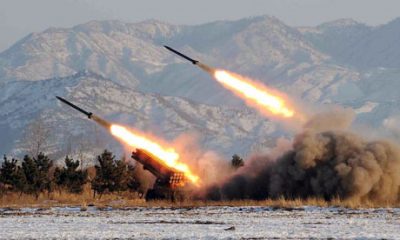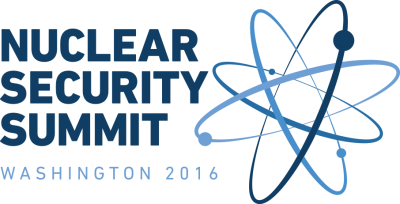By
Tom Arms
Brussels was devastating. So was Paris, London, Madrid and of course the horrific destruction of the soaring twin towers of New York. Now just think how much more worse it would have been if the suicidal religious fanatics had a nuclear bomb.
And they want one. Imprisoned Al-Qaeda spokesman Sulaiman Abu Ghaith has stated Al-Qaeda’s objective: “to kill 4 million Americans—2 million of them children.”
That is the nightmare scenario that has launched millions of paperbacks and dozens of films. The threat, however is not fictional. Neither is it confined to the American homeland. That is why 52 world leaders are gathering in Washington on Tuesday for their fourth Nuclear Security Summit.
They want to construct what has been termed a “world security architecture” to deny terrorists access to nuclear materials forever. The problem is that forever is an awfully long time. It’s a bit like the word ‘never’ which politicians are forever being told never to use. So what are the chances of success? Opinions vary, but the general consensus is slim.
It would seem likely that at some point the terrorists will acquire and use a radioactive weapon. During the Cold War the world was protected by the frighteningly termed policy of Mutual Assured Destruction. Both sides were restrained by the fear that use of a nuclear weapon would result in a world conflagration.
The Jihadists are not bound by the same constraints. They represent only themselves and widely dispersed radicals who are impossible to target with retaliatory weapons of mass destruction.
The terrorists’ ideal scenario is the acquisition of a stray nuclear warhead. There was a real possibility of just such an occurrence in the 1990s after the collapse of the Soviet Union. But since then Russian security has been considerably tightened.
Next on the list would be radioactive materials from a nuclear reactor. As of July 2015 there were 438 nuclear reactors operating in 30 countries and 67 more are under construction in 15 countries. Only a handful produce the terrorist bomb makers dream product of highly enriched uranium, but all of them produce dangerous radioactive material.
There are also lots of other sources—too many. Radioactive material is now produced for an increasing variety of uses. It can be used to determine the ash content of coal or to detect deposits of iron, nickel, copper, zinc, tin and lead. Gamma rays sterilise medical instruments and since the 60s the food industry has used radiation to extend the shelf life of red meat. Nuclear materials are used all the time in medicine. There are X-rays for a start, but large amounts of radio isotopes are stored in thousands of hospitals around the world for the detection and treatment of cancer.
None of these materials can be used to build a nuclear bomb. But it is a fairly simple matter to construct what is called a “dirty bomb.” All you need is radioactive materials stolen from a hospital, mining operation, or food processing plant. You pack the materials in a car you don’t want to use again along with a package of semtex and you blow it up during rush hour in the middle of London or New York.
Security chiefs are dismissive of the dirty bomb. They describe it as a weapon of “mass disturbance” rather than “mass destruction.” Worse case scenario: A hundred deaths and a few city blocks turned into a nuclear contamination zone. All things are relative, but many would regard that as more than a disturbance.
Yukiya Amano, the Director General of the International Atomic Energy Agency, reported last month that since 1995 there have been 2,800 incidents of radioactive material going missing.
That is why Russia’s boycott of next week’s summit is disturbing. Putin ordered the boycott in retaliation for the West’s economic sanctions. Surely, with his own terrorist problems in Chechnya, Putin must realise the benefit of global cooperation to secure nuclear supplies.
Also disturbing is the lack of support from world leaders for the International Atomic Energy Agency which is financed with pledges from national treasuries. The first Nuclear Security Summit in 2010 identified the IAEA as the pivotal agency best placed to coordinate the security of the world’s nuclear supplies. Since then the agency’s budget has been slashed from $575 million a year to $368 million. And only ten percent is spent on security.
Is this the way to fund what President Obama has called “the most immediate and extreme threat to global security?”
Tom Arms broadcasts on world affairs for a number of US radio stations including WTKF at http://www.wtkf107.com/. His Weekly Viewpoints discussion programme can be heard at 1830 EST on Wednesdays and his LookAhead at the next week’s main events on Fridays at 1800.
LookAhead Radio World Report for week commencing 28th March:




No Comments Yet!
You can be first to comment this post!